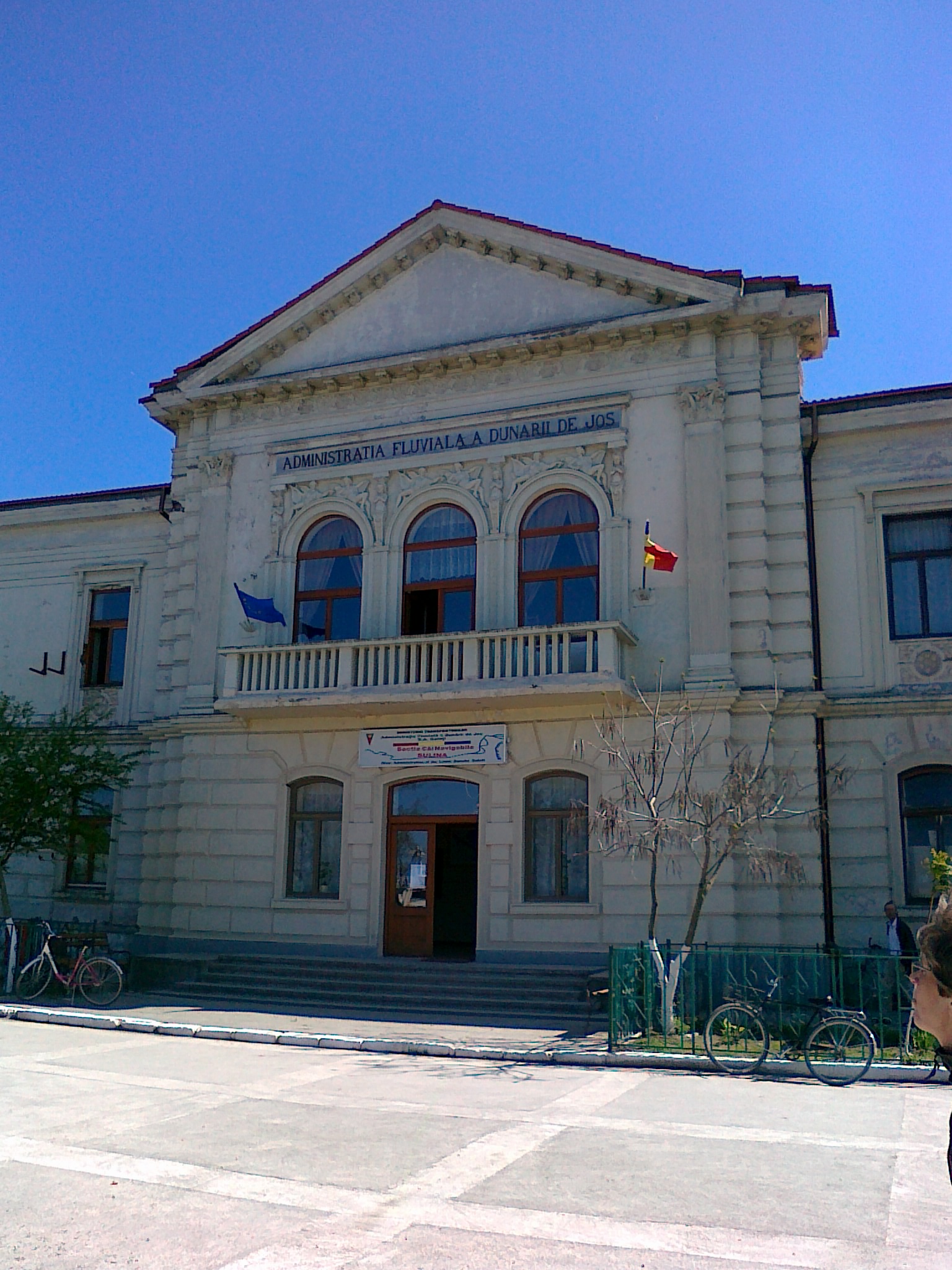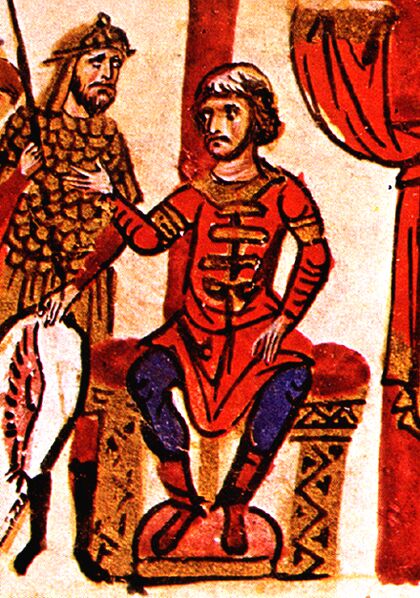|
Tulcea
Tulcea (; also known by other alternative names) is a city in Northern Dobruja, Romania. It is the administrative center of Tulcea County, and had a population of 73,707 . One village, Tudor Vladimirescu, is administered by the city. Names The city is known in Bulgarian, Russian and Ukrainian as Тулча, romanized: ''Tulcha''; in Greek as Αιγισσός, romanized: ''Aegyssus''; in Hungarian as ''Tulcsa''; and in Turkish as ''Tulça''. History Tulcea was founded in the 7th century B.C. under the name of ''Aegyssus'', mentioned in the documents of Procopius and Diodorus of Sicily (3rd century BC). In his ''Ex Ponto'', Ovid recorded a local tradition that ascribed its name to a mythical founder, ''Aegisos the Caspian''. After the fighting from 1215 AD the Romans conquered the town. They rebuilt it after their plans, their technique and architectural vision, reorganizing it. The fortified town was mentioned as late as the 10th century, in documents such as Notitia Epis ... [...More Info...] [...Related Items...] OR: [Wikipedia] [Google] [Baidu] |
Tulcea County
Tulcea County () is a county ( județ) of Romania, in the historical region Dobruja, with the capital city at Tulcea. It includes in its northeast corner the large and thinly-populated estuary of the Danube. Demographics In 2011, Tulcea County had a population of 201,462. The population density was 23.7/km², the lowest among the counties of Romania, due to the inclusion within the area of the lowly-populated Danube estuarial wetlands. * Romanians - 89.13% * Lipovans - 5.41% * Turks - 0.93% * Romani - 1.87% * Greeks - 0.65% In the Danube Delta there is an important community of Russians and Lipovans. In the south of the county there are communities of Turks. The region once was a centre of Islam in Romania. Geography The county has a total area of . The most significant feature of Tulcea County is the Danube Delta, which occupies about 1/3 of the entire surface and is located in the North-East side of the county. The Delta has three main branches: the Sulina bran ... [...More Info...] [...Related Items...] OR: [Wikipedia] [Google] [Baidu] |
Northern Dobruja
Northern Dobruja ( ro, Dobrogea de Nord or simply ; bg, Северна Добруджа, ''Severna Dobrudzha'') is the part of Dobruja within the borders of Romania. It lies between the lower Danube river and the Black Sea, bordered in the south by Southern Dobruja, which is part of Bulgaria. History Around 600 BC, the Greeks colonized the Black Sea shore and founded numerous fortresses: Tomis (today's Constanta), Callatis, Histria, Argamum, Heracleea, Aegysus. Greeks have commerce with dacians who lived there on main land. Dobruja became a Roman province after conquest of Dacian Tribes. One of the best preserved remnants of this period is the Capidava citadel. Between the 7th and 14th century, Dobruja was part of the First Bulgarian Empire and the Second Bulgarian Empire. For a long period in the 14-15th century, Dobruja became part of Wallachia. The territory fell under Ottoman rule from the mid-15th century until 1878, when it was awarded to Romania for its role in the 18 ... [...More Info...] [...Related Items...] OR: [Wikipedia] [Google] [Baidu] |
Names
A name is a term used for identification by an external observer. They can identify a class or category of things, or a single thing, either uniquely, or within a given context. The entity identified by a name is called its referent. A personal name identifies, not necessarily uniquely, a ''specific'' individual human. The name of a specific entity is sometimes called a proper name (although that term has a philosophical meaning as well) and is, when consisting of only one word, a proper noun. Other nouns are sometimes called "common names" or ( obsolete) "general names". A name can be given to a person, place, or thing; for example, parents can give their child a name or a scientist can give an element a name. Etymology The word ''name'' comes from Old English ''nama''; cognate with Old High German (OHG) ''namo'', Sanskrit (''nāman''), Latin '' nomen'', Greek (''onoma''), and Persian (''nâm''), from the Proto-Indo-European (PIE) ''*h₁nómn̥''. Outside Indo-European, ... [...More Info...] [...Related Items...] OR: [Wikipedia] [Google] [Baidu] |
Bulgarians
Bulgarians ( bg, българи, Bǎlgari, ) are a nation and South Slavic ethnic group native to Bulgaria and the rest of Southeast Europe. Etymology Bulgarians derive their ethnonym from the Bulgars. Their name is not completely understood and difficult to trace back earlier than the 4th century AD, but it is possibly derived from the Proto-Turkic word ''*bulģha'' ("to mix", "shake", "stir") and its derivative ''*bulgak'' ("revolt", "disorder"). Alternative etymologies include derivation from a compound of Proto-Turkic (Oghuric) ''*bel'' ("five") and ''*gur'' ("arrow" in the sense of "tribe"), a proposed division within the Utigurs or Onogurs ("ten tribes"). Citizenship According to the Art.25 (1) of Constitution of Bulgaria, a Bulgarian citizen shall be anyone born to at least one parent holding a Bulgarian citizenship, or born on the territory of the Republic of Bulgaria, should they not be entitled to any other citizenship by virtue of origin. Bulgarian citizenship sh ... [...More Info...] [...Related Items...] OR: [Wikipedia] [Google] [Baidu] |
Circassians
The Circassians (also referred to as Cherkess or Adyghe; Adyghe and Kabardian: Адыгэхэр, romanized: ''Adıgəxər'') are an indigenous Northwest Caucasian ethnic group and nation native to the historical country-region of Circassia in the North Caucasus. As a consequence of the Circassian genocide, which was perpetrated by the Russian Empire in the 19th century during the Russo-Circassian War, most Circassians were exiled from their homeland in Circassia to modern-day Turkey and the rest of the Middle East, where the majority of them are concentrated today. The Unrepresented Nations and Peoples Organization estimated in the early 1990s that there are as many as 3.7 million Circassians in diaspora in over 50 countries. The Circassian language is the ancestral language of the Circassian people, and Islam has been the dominant religion among them since the 17th century. Circassia has been subject to repeated invasions since ancient times; its isolated terrain coupled wi ... [...More Info...] [...Related Items...] OR: [Wikipedia] [Google] [Baidu] |
Russo-Turkish War (1877–1878)
The Russo-Turkish War of 1877–1878 ( tr, 93 Harbi, lit=War of ’93, named for the year 1293 in the Islamic calendar; russian: Русско-турецкая война, Russko-turetskaya voyna, "Russian–Turkish war") was a conflict between the Ottoman Empire and a coalition led by the Russian Empire, and including Bulgaria, Romania, Serbia, and Montenegro. Fought in the Balkans and in the Caucasus, it originated in emerging 19th century Balkan nationalism. Additional factors included the Russian goals of recovering territorial losses endured during the Crimean War of 1853–56, re-establishing itself in the Black Sea and supporting the political movement attempting to free Balkan nations from the Ottoman Empire. The Russian-led coalition won the war, pushing the Ottomans back all the way to the gates of Constantinople, leading to the intervention of the western European great powers. As a result, Russia succeeded in claiming provinces in the Caucasus, namely Kars and Batum, a ... [...More Info...] [...Related Items...] OR: [Wikipedia] [Google] [Baidu] |
Silistra Province, Ottoman Empire
The Eyalet of Silistra or Silistria ( ota, ایالت سیلیستره; ''Eyālet-i Silistre''), later known as Özü Eyalet ( ota, ایالت اوزی; ''Eyālet-i Özi'') meaning Province of Ochakiv was an ''eyalet'' of the Ottoman Empire along the Black Sea littoral and south bank of the Danube River in southeastern Europe. The fortress of Akkerman was under the eyalet's jurisdiction. Its reported area in the 19th century was . History The Eyalet of Silistra was formed in 1593 as beylerbeylik of Özi (Ukrainian: Očakiv) Nejat Göyünç, Osmanlı Devleti'nde Tașra Teșkilâtı (Tanzimat'a Kadar), ''Osmanlı'', Cilt 6: Teșkilât, Yeni Türkiye Yayınları, Ankara, 1999, , p. 78. from territory of the former Principality of Karvuna, later Dobruja, Silistra was originally the Silistra Sanjak of Rumelia Eyalet. It was named after Silistra, since its governor often resided in this Danubian fortress. Around 1599, it was expanded and raised to the level of an eyalet likely as a ... [...More Info...] [...Related Items...] OR: [Wikipedia] [Google] [Baidu] |
Shipyard
A shipyard, also called a dockyard or boatyard, is a place where ships are built and repaired. These can be yachts, military vessels, cruise liners or other cargo or passenger ships. Dockyards are sometimes more associated with maintenance and basing activities than shipyards, which are sometimes associated more with initial construction. The terms are routinely used interchangeably, in part because the evolution of dockyards and shipyards has often caused them to change or merge roles. Countries with large shipbuilding industries include Australia, Brazil, China, Croatia, Denmark, Finland, France, Germany, India, Ireland, Italy, Japan, the Netherlands, Norway, the Philippines, Poland, Romania, Russia, Singapore, South Korea, Sweden, Taiwan, Turkey, the United Arab Emirates, Ukraine, the United Kingdom, the United States and Vietnam. The shipbuilding industry is more fragmented in Europe than in Asia where countries tend to have fewer, larger companies. Many naval vessels ar ... [...More Info...] [...Related Items...] OR: [Wikipedia] [Google] [Baidu] |
Ottoman Empire
The Ottoman Empire, * ; is an archaic version. The definite article forms and were synonymous * and el, Оθωμανική Αυτοκρατορία, Othōmanikē Avtokratoria, label=none * info page on book at Martin Luther University) // CITED: p. 36 (PDF p. 38/338) also known as the Turkish Empire, was an empire that controlled much of Southeast Europe, Western Asia, and Northern Africa between the 14th and early 20th centuries. It was founded at the end of the 13th century in northwestern Anatolia in the town of Söğüt (modern-day Bilecik Province) by the Turkoman tribal leader Osman I. After 1354, the Ottomans crossed into Europe and, with the conquest of the Balkans, the Ottoman beylik was transformed into a transcontinental empire. The Ottomans ended the Byzantine Empire with the conquest of Constantinople in 1453 by Mehmed the Conqueror. Under the reign of Suleiman the Magnificent, the Ottoman Empire marked the peak of its power and prosperity, as well a ... [...More Info...] [...Related Items...] OR: [Wikipedia] [Google] [Baidu] |
Oghuz Turks
The Oghuz or Ghuzz Turks (Middle Turkic languages, Middle Turkic: ٱغُز, ''Oγuz'', ota, اوغوز, Oġuz) were a western Turkic people that spoke the Oghuz languages, Oghuz branch of the Turkic languages, Turkic language family. In the 8th century, they formed a Turkic tribal confederation, tribal confederation conventionally named the Oghuz Yabgu State in Central Asia. The name ''Oghuz'' is a Common Turkic word for "tribe". Byzantine Empire, Byzantine sources call the Oghuz the Uzes (Οὐ̑ζοι, ''Ouzoi''). By the 10th century, Islamic sources were calling them Muslim Turkmens, as opposed to Tengrist or Buddhist. By the 12th century, this term had passed into Byzantine usage and the Oghuzes were overwhelmingly Muslim. The term "Oghuz" was gradually supplanted among the Turks themselves by the terms ''Turkmen'' and ''Turkoman (ethnonym), Turcoman'', ( ota, تركمن, Türkmen or ''Türkmân'') from the mid-10th century on, a process which was completed by the beginn ... [...More Info...] [...Related Items...] OR: [Wikipedia] [Google] [Baidu] |
Bulgarian Empire
In the medieval history of Europe, Bulgaria's status as the Bulgarian Empire ( bg, Българско царство, ''Balgarsko tsarstvo'' ) occurred in two distinct periods: between the seventh and the eleventh centuries and again between the twelfth and the fourteenth centuries. The two "Bulgarian Empires" are treated not as separate entities but rather as one state that was restored after a period of Byzantine rule over its territory. First Bulgarian Empire Moesia was repeatedly invaded by both Slavs and Bulgars during the 5th, 6th and 7th centuries. In 499, the Bulgars crossed Danube and reached Thrace where on the banks of the river Tzurta (considered a tributary of Maritsa) defeated 15,000 men strong Roman army led by magister militum Aristus. In the 670s under the rule of Asparukh the Bulgars settled further south on territories of the Eastern Roman Empire in Scythia Minor near the Danube Delta in a region called Ongal and allied with the local Slavs. Their ho ... [...More Info...] [...Related Items...] OR: [Wikipedia] [Google] [Baidu] |






